-
Dynamic assessment of the impact of compound dry-hot conditions on global terrestrial water storage Remote Sens. Environ. (IF 11.1) Pub Date : 2024-09-14 Zhiming Han, Hongbo Zhang, Jinxia Fu, Zhengshi Wang, Limin Duan, Wenrui Zhang, Zhi Li
Precipitation and temperature are critical factors influencing terrestrial water storage (TWS) can lead to unexpected TWS losses when compounded by dryness and high temperatures. Yet, a dynamic assessment of the individual and combined effects of these conditions on TWS is lacking. This study proposes a framework to assess TWS loss driven by compound dry-hot conditions (CDHC) and dynamically evaluates
-
Subfield-level crop yield mapping without ground truth data: A scale transfer framework Remote Sens. Environ. (IF 11.1) Pub Date : 2024-09-13 Yuchi Ma, Sang-Zi Liang, D. Brenton Myers, Anu Swatantran, David B. Lobell
Ongoing advances in satellite remote sensing data and machine learning methods have enabled crop yield estimation at various spatial and temporal resolutions. While yield mapping at broader scales (e.g., state or county level) has become common, mapping at finer scales (e.g., field or subfield) has been limited by the lack of ground truth data for model training and evaluation. Here we present a scale
-
A new dataset of leaf optical traits to include biophysical parameters in addition to spectral and biochemical assessment Remote Sens. Environ. (IF 11.1) Pub Date : 2024-09-13 Reisha D. Peters, Scott D. Noble
To enable future improvement on current leaf optical property models, more data incorporating a larger range of measured properties is needed. To this end, a dataset was collected to associate spectral measurements (ultraviolet, visible, and near infrared) with biochemical and biophysical properties of leaves. The leaves represented in this dataset were selected to provide a more comprehensive representation
-
Mapping global drought-induced forest mortality based on multiple satellite vegetation optical depth data Remote Sens. Environ. (IF 11.1) Pub Date : 2024-09-13 Xiang Zhang, Xu Zhang, Berhanu Keno Terfa, Won-Ho Nam, Jiangyuan Zeng, Hongliang Ma, Xihui Gu, Wenying Du, Chao Wang, Jian Yang, Peng Wang, Dev Niyogi, Nengcheng Chen
The frequency and intensity of global drought events are continuously increasing, posing an elevated risk of forest mortality worldwide. Accurately understanding the impact of drought on forests, particularly the distribution of mortality due to drought, is crucial for scientifically understanding global ecological drought. Atmospheric indicators and soil moisture are typically correlated with tree
-
Retrieval of moisture content of common Sphagnum peat moss species from hyperspectral and multispectral data Remote Sens. Environ. (IF 11.1) Pub Date : 2024-09-11 Susanna Karlqvist, Iuliia Burdun, Sini-Selina Salko, Jussi Juola, Miina Rautiainen
Peatlands store enormous amounts of carbon in a peat layer, the formation and preservation of which can only occur under waterlogged conditions. Monitoring peatland moisture conditions is critically important because a decrease in moisture leads to peat oxidation and the release of accumulated carbon back into the atmosphere as a greenhouse gas. Optical remote sensing enables the indirect monitoring
-
Automatic extraction of glacial lakes from Landsat imagery using deep learning across the Third Pole region Remote Sens. Environ. (IF 11.1) Pub Date : 2024-09-11 Qian Tang, Guoqing Zhang, Tandong Yao, Marc Wieland, Lin Liu, Saurabh Kaushik
The Tibetan Plateau and surroundings, commonly referred to as the Third Pole region, has the largest ice store outside the Arctic and Antarctic regions. Glacial lakes in the Third Pole region are expanding rapidly as glaciers thin and retreat. The Landsat satellite series is the most popular for mapping glacial lakes, benefiting from long-term archived data and suitable spatial resolution (30 m since
-
Land surface temperature retrieval from SDGSAT-1 thermal infrared spectrometer images: Algorithm and validation Remote Sens. Environ. (IF 11.1) Pub Date : 2024-09-11 Yuanjian Teng, Huazhong Ren, Yonghong Hu, Changyong Dou
Launched by China in 2021, the Sustainable Development Goals Science Satellite 1 (SDGSAT-1) is the world's first science satellite dedicated to serving the United Nations 2030 Agenda for Sustainable Development Goals. In keeping with international aims of this 2030 agenda, the SDGSAT-1 data will be made available for open accee without any restrictions. The Thermal Infrared Spectrometer (TIS) onboard
-
Airborne thermal infrared hyperspectral image temperature and emissivity retrieval based on inter-channel correlated automatic atmospheric compensation and TES Remote Sens. Environ. (IF 11.1) Pub Date : 2024-09-11 Du Wang, Li-Qin Cao, Lyu-Zhou Gao, Yan-Fei Zhong
Land Surface Temperature (LST) and Land Surface Emissivity (LSE) are key properties of natural materials essential for scientific analysis. Existing retrieval techniques, however, impede the automatic retrieval of LST and LSE across various observational contexts due to the frequent unavailability of in-situ atmospheric data or blackbody references for atmospheric compensation. To address this, we
-
DRMAT: A multivariate algorithm for detecting breakpoints in multispectral time series Remote Sens. Environ. (IF 11.1) Pub Date : 2024-09-11 Yang Li, Michael A. Wulder, Zhe Zhu, Jan Verbesselt, Dainius Masiliūnas, Yanlan Liu, Gil Bohrer, Yongyang Cai, Yuyu Zhou, Zhaowei Ding, Kaiguang Zhao
Ecosystem dynamics and ecological disturbances manifest as breakpoints in long-term multispectral remote sensing time series. Typically, these breakpoints are captured using univariate methods applied individually to each band, with subsequent integration of the results. However, multivariate analysis provides a promising way to fully incorporate the multispectral bands into breakpoints detection methods
-
Mobile laser scanning as reference for estimation of stem attributes from airborne laser scanning Remote Sens. Environ. (IF 11.1) Pub Date : 2024-09-10 Raul de Paula Pires, Eva Lindberg, Henrik Jan Persson, Kenneth Olofsson, Johan Holmgren
The acquisition of high-quality reference data is essential for effectively modelling forest attributes. Incorporating close-range Light Detection and Ranging (LiDAR) systems into the reference data collection stage of remote sensing-based forest inventories can not only increase data collection efficiency but also increase the number of attributes measured with high quality. Therefore, we propose
-
Sea surface current estimation using optical satellite imagery of Kelvin wakes and AIS data Remote Sens. Environ. (IF 11.1) Pub Date : 2024-09-09 Koen Haakman, Martin Verlaan, Avelon Gerritsma, Arne van der Hout
Sea surface currents are of significant importance in various scientific and maritime applications. There are several measurement techniques available to study surface currents, however, they have limitations in spatial coverage and resolution. This study presents a proof-of-concept for a new measurement principle that relies on the difference between a ship’s speed relative to water and land. The
-
Nearshore satellite-derived bathymetry from a single-pass satellite video: Improvements from adaptive correlation window size and modulation transfer function Remote Sens. Environ. (IF 11.1) Pub Date : 2024-09-07 Adrien N. Klotz, Rafael Almar, Yohan Quenet, Erwin W.J. Bergsma, David Youssefi, Stephanie Artigues, Nicolas Rascle, Boubou Aldiouma Sy, Abdoulaye Ndour
Accurate nearshore bathymetry estimation remains a critical challenge, impacting coastal forecasting evolution assessments through the inaccuracies in both in-situ and remote sensing surveys. This article introduces the Satellite Derived Bathymetry (SDB) temporal correlation method, showcasing its ability in deriving accurate nearshore bathymetry from one minute spaceborne videos. The approach utilises
-
The potential of NIRvP in estimating evapotranspiration Remote Sens. Environ. (IF 11.1) Pub Date : 2024-09-07 Cha Ersi, Bilige Sudu, Ziming Song, Yongbin Bao, Sicheng Wei, Jiquan Zhang, Zhijun Tong, Xingpeng Liu, Wuni Le, Su Rina
Accurate estimation of regional-scale evapotranspiration (ET) and reference evapotranspiration (ET) is crucial for scientific and rational water resource management, agricultural irrigation decision-making, and ecosystem monitoring. Currently, the estimation of ET or ET still mainly relies on observational data from surface meteorological stations or flux towers. However, due to the complexity of parameters
-
Monitoring spatially heterogeneous riparian vegetation around permanent waterholes: A method to integrate LiDAR and Landsat data for enhanced ecological interpretation of Landsat fPAR time-series Remote Sens. Environ. (IF 11.1) Pub Date : 2024-09-07 Marcelo Henriques, Tim R. McVicar, Kate L. Holland, Edoardo Daly
The vegetation dynamics in highly heterogeneous landscapes (e.g., riparian vegetation surrounding waterholes and oases) are difficult to detect from large (e.g., MODIS) and moderate (e.g., Landsat) spatial resolution remote sensing products. Within a “classify-to-monitor” approach, a method to monitor spatially heterogeneous riparian vegetation dynamics is developed by integrating high spatial resolution
-
Improving estimation of diurnal land surface temperatures by integrating weather modeling with satellite observations Remote Sens. Environ. (IF 11.1) Pub Date : 2024-09-07 Wei Chen, Yuyu Zhou, Ulrike Passe, Tao Zhang, Chenghao Wang, Ghassem R. Asrar, Qi Li, Huidong Li
Land surface temperature (LST) derived from satellite observations and weather modeling has been widely used for investigating Earth surface-atmosphere energy exchange and radiation budget. However, satellite-derived LST has a trade-off between spatial and temporal resolutions and missing observations caused by clouds, while there are limitations such as potential bias and expensive computation in
-
Improvement of NDVI mixture model for fractional vegetation cover estimation with consideration of shaded vegetation and soil components Remote Sens. Environ. (IF 11.1) Pub Date : 2024-09-05 Xihan Mu, Yang Yang, Hui Xu, Yuhan Guo, Yongkang Lai, Tim R. McVicar, Donghui Xie, Guangjian Yan
The fraction of green vegetation is a widely-used indicator of vegetation abundance at regional and/or global scales. The pixel mixture model, especially the dimidiate pixel model (DPM, also referred to as two-endmember model) based on the normalized difference vegetation index (NDVI), plays an important role in the accurate estimation of fractional vegetation cover (FVC) remote sensing. The two components
-
Improving water level monitoring in small to medium-sized rivers: An enhanced footprint filter-based conditional threshold retracker approach Remote Sens. Environ. (IF 11.1) Pub Date : 2024-09-05 Xilin Hu, Chenhui Jiang, Dejun Zhu, Danxun Li
Satellite altimetry data has become essential for studying the dynamics of water bodies, especially in regions with limited or inaccessible data. Traditional low-resolution mode (LRM) satellites' accuracy cannot be guaranteed when it comes to assessing water levels in small- (< 200 m in width) and medium-sized (200–800 m in width) rivers. Synthetic aperture radar (SAR) altimeters, exemplified by Sentinel-3 A
-
Monitoring volcanic CO2 flux by the remote sensing of vegetation on Mt. Etna, Italy Remote Sens. Environ. (IF 11.1) Pub Date : 2024-09-04 Nicole K. Guinn, Craig Glennie, Marco Liuzzo, Giovanni Giuffrida, Sergio Gurrieri
Volcanic CO is widely acknowledged as an important geochemical precursor for volcanic activity; however, obtaining observations through remote sensing remains a challenge. It is well established that volcanic CO diffusely degases during magma ascent, and the volatiles interact with the ecosystem on the surface through CO fertilization, which can improve vegetation health. A normalized difference vegetation
-
New insights into distinguishing temperate deciduous swamps from upland forests and shrublands with SAR Remote Sens. Environ. (IF 11.1) Pub Date : 2024-09-04 Sarah Banks, Koreen Millard, Laura Dingle-Robertson, Jason Duffe
Although wetlands are widely recognized for thier important role in providing ecosystem services, their abundance, spatial extent, and condition remain poorly constrained and at-risk of decline. Accurate mapping and monitoring are therefore essential for their protection. However, distinguishing swamps from upland forests and shrublands is especially challenging because optical sensors cannot detect
-
Evaluating SWOT's interferometric capabilities for mapping intertidal topography Remote Sens. Environ. (IF 11.1) Pub Date : 2024-09-03 Edward Salameh, Damien Desroches, Julien Deloffre, Roger Fjørtoft, Ernesto Tonatiuh Mendoza, Imen Turki, Laurent Froideval, Romain Levaillant, Simon Déchamps, Nicolas Picot, Benoit Laignel, Frédéric Frappart
The Surface Water and Ocean Topography (SWOT) mission, originally designed for observing ocean and inland water bodies, can be a valuable tool for mapping the topography of intertidal flats. This study provides the first demonstration of SWOT's ability to measure intertidal topography using simultaneous interferometric acquisitions. Observations acquired between April and July 2023, during the calibration/validation
-
A source-free unsupervised domain adaptation method for cross-regional and cross-time crop mapping from satellite image time series Remote Sens. Environ. (IF 11.1) Pub Date : 2024-09-03 Sina Mohammadi, Mariana Belgiu, Alfred Stein
Precise and timely information about crop types plays a crucial role in various agriculture-related applications. However, crop type mapping methods often face significant challenges in cross-regional and cross-time scenarios with high discrepancies between temporal-spectral characteristics of crops from different regions and years. Unsupervised domain adaptation (UDA) methods have been employed to
-
Flood inundation monitoring using multi-source satellite imagery: a knowledge transfer strategy for heterogeneous image change detection Remote Sens. Environ. (IF 11.1) Pub Date : 2024-08-31 Bofei Zhao, Haigang Sui, Junyi Liu, Weiyue Shi, Wentao Wang, Chuan Xu, Jindi Wang
Flood emergency mapping is essential for flood management, often requiring near real-time extraction of large-scale flood extents by combining pre- and post-event multi-source remote sensing images. Pre-event optical imagery delineates the normal water extent, providing a benchmark for estimation of post-flood changes. Synthetic aperture radar (SAR) imagery provides rapid and accurate interpretation
-
Phase unwrapping of SAR interferogram from modified U-net via training data simulation and network structure optimization Remote Sens. Environ. (IF 11.1) Pub Date : 2024-08-30 Won-Kyung Baek, Hyung-Sup Jung
Phase unwrapping is the process of retrieving the true phase values from observed wrapped phases by adding the correct multiples of 2π. This process is crucial in synthetic aperture radar (SAR) interferometry, and numerous studies have aimed to enhance its performance. This study explored phase unwrapping using a modified U-Net regression model by optimizing both the network structure and training
-
A LiDAR-driven three-dimensional simulation model for far-red solar-induced chlorophyll fluorescence in forests Remote Sens. Environ. (IF 11.1) Pub Date : 2024-08-30 Shichao Jin, Chunhui Zhan, Weiwei Liu, Lixia Ma, Zhaohui Li, Xiaokang Zhang, Yunfei Wu, Qian Zhang, Guang Zheng, Yongguang Zhang
Solar-induced chlorophyll fluorescence (SIF) is a subtle but informative probe of plant photosynthesis. Quantifying the three-dimensional (3D) distribution of SIF benefits a better understanding of photosynthesis variations over heterogeneous canopies. Although radiative transfer models (RTMs) provide a solid theoretical basis for simulating the 3D SIF distribution, most RTMs use virtual scenes with
-
L1-Tree: A novel algorithm for constructing 3D tree models and estimating branch architectural traits using terrestrial laser scanning data Remote Sens. Environ. (IF 11.1) Pub Date : 2024-08-30 Yuhao Feng, Yanjun Su, Jiatong Wang, Jiabo Yan, Xiaotian Qi, Eduardo Eiji Maeda, Matheus Henrique Nunes, Xiaoxia Zhao, Xiaoqiang Liu, Xiaoyong Wu, Chen Yang, Jiamin Pan, Kai Dong, Danhua Zhang, Tianyu Hu, Jingyun Fang
Branch architecture provides crucial information for the understanding of plant trait variability and the adaptive strategies employed by trees in response to their environment. High-fidelity terrestrial laser scanning (TLS) data provide an accurate, efficient, and non-destructive means for constructing three-dimensional (3D) tree models and estimating architectural traits. However, the complex canopy
-
Assessment of the spaceborne EnMAP hyperspectral data for alteration mineral mapping: A case study of the Reko Diq porphyry Cu[sbnd]Au deposit, Pakistan Remote Sens. Environ. (IF 11.1) Pub Date : 2024-08-30 Saeid Asadzadeh, Xiaodong Zhou, Sabine Chabrillat
For over four decades, spaceborne multispectral data have played a crucial role in supporting mineral exploration and geologic mapping. The spaceborne multispectral datasets, however, have a restricted number of bands with coarse spectral resolution and, thus are very limited in mineral mapping. The advent of high-quality spaceborne imaging spectroscopic data like the Environmental Mapping and Analysis
-
High-resolution population maps derived from Sentinel-1 and Sentinel-2 Remote Sens. Environ. (IF 11.1) Pub Date : 2024-08-30 Nando Metzger, Rodrigo Caye Daudt, Devis Tuia, Konrad Schindler
Detailed population maps play an important role in diverse fields ranging from humanitarian action to urban planning. Generating such maps in a timely and scalable manner presents a challenge, especially in data-scarce regions. To address it we have developed , a population mapping method whose only inputs are free, globally available satellite images from Sentinel-1 and Sentinel-2; and a small number
-
SCARF: A new algorithm for continuous prediction of biomass dynamics using machine learning and Landsat time series Remote Sens. Environ. (IF 11.1) Pub Date : 2024-08-30 Yingchun Fu, Runhao Li, Zhe Zhu, Yufei Xue, Hu Ding, Xinyu Wang, Jiaming Na, Weijie Xia
We developed the SCARF (Spatial Mismatch and Systematic Prediction Error Corrected cAscade Random Forests) algorithm for continuous prediction of biomass dynamics using machine learning and Landsat Time Series (LTS). Our approach addresses the challenges posed by the cloudy subtropical forests in southern China, where monitoring biomass dynamics is notoriously difficult. To derive spectral-temporal
-
An automated sample generation method by integrating phenology domain optical-SAR features in rice cropping pattern mapping Remote Sens. Environ. (IF 11.1) Pub Date : 2024-08-28 Jingya Yang, Qiong Hu, Wenjuan Li, Qian Song, Zhiwen Cai, Xinyu Zhang, Haodong Wei, Wenbin Wu
Accurate spatio-temporal information on rice cropping patterns is vital for predicting grain production, managing water resource and assessing greenhouse gas emissions. However, current automated mapping of rice cropping patterns at regional scale is heavily constrained by insufficient training samples and frequent cloudy weathers in major rice-producing areas. To tackle this challenge, we proposed
-
“Gear-like” process between asymmetric dipole eddies from satellite altimetry Remote Sens. Environ. (IF 11.1) Pub Date : 2024-08-28 Shuang Long, Fenglin Tian, Ying Ma, Chuanchuan Cao, Ge Chen
Mesoscale dipoles compose two counter-rotating mesoscale eddies. They are observed in oceans worldwide and significantly impact the biogeochemical cycle, marine ecosystems, and ocean water transport. This study investigates the evolution of asymmetric dipole eddies based on the satellite altimeter data for the period January 1993–December 2020. The coupling and decoupling of eddy dipoles impact various
-
Deep learning for retrieving omni-directional ocean wave spectra from spaceborne synthetic aperture radar Remote Sens. Environ. (IF 11.1) Pub Date : 2024-08-27 Ke Wu, Xiao-Ming Li
Synthetic Aperture Radar (SAR) is a unique remote sensing instrument imaging ocean surface waves in two dimensions with high spatial resolution regardless of sunlight and weather conditions. However, due to the nonlinear imaging process, the ocean wave spectra cannot be retrieved directly from SAR data. The emergence of deep learning (DL) techniques provides a new paradigm for addressing this challenge
-
A machine learning approach for estimating snow depth across the European Alps from Sentinel-1 imagery Remote Sens. Environ. (IF 11.1) Pub Date : 2024-08-27 Devon Dunmire, Hans Lievens, Lucas Boeykens, Gabriëlle J.M. De Lannoy
Seasonal snow plays a crucial role in society and understanding trends in snow depth and mass is essential for making informed decisions about water resources and adaptation to climate change. However, quantifying snow depth in remote, mountainous areas with complex topography remains a significant challenge. The increasing availability of high-resolution synthetic aperture radar (SAR) observations
-
An efficient and generalisable approach for mapping paddy rice fields based on their unique spectra during the transplanting period leveraging the CIE colour space Remote Sens. Environ. (IF 11.1) Pub Date : 2024-08-24 Huapeng Li, Jujian Huang, Ce Zhang, Xiangyu Ning, Shuqing Zhang, Peter M. Atkinson
As one of the most important staple foods globally, rice sustains nearly half of the world's population. Accurate and timely paddy rice mapping is, thus, essential for rice-related policy-making to ensure food security in the context of anthropogenic, environmental and climate changes. However, paddy rice mapping remains a challenging task since it usually has similar spectral characteristics to other
-
Urbanization-induced spatial and temporal patterns of local drought revealed by high-resolution fused remotely sensed datasets Remote Sens. Environ. (IF 11.1) Pub Date : 2024-08-24 Shuzhe Huang, Siqi Wang, Jing Chen, Chao Wang, Xiang Zhang, Jiefeng Wu, Chunlong Li, Aminjon Gulakhmadov, Dev Niyogi, Nengcheng Chen
Urbanization has exerted considerable impacts on urban water systems and ecological environments, yet its effects on local meteorological drought remain under-explored. The primary challenge to local-scale drought analysis is the scarcity of meteorological datasets with sufficient spatial and temporal resolution. To address the research gap, we initially proposed a two-step fusion framework, integrating
-
Increase in gross primary production of boreal forests balanced out by increase in ecosystem respiration Remote Sens. Environ. (IF 11.1) Pub Date : 2024-08-24 Jouni Pulliainen, Mika Aurela, Tuula Aalto, Kristin Böttcher, Juval Cohen, Chris Derksen, Martin Heimann, Manuel Helbig, Pasi Kolari, Anna Kontu, Alisa Krasnova, Samuli Launiainen, Juha Lemmetyinen, Hannakaisa Lindqvist, Anders Lindroth, Annalea Lohila, Kari Luojus, Ivan Mammarella, Tiina Markkanen, Elma Nevala, Steffen Noe, Matthias Peichl, Jukka Pumpanen, Kimmo Rautiainen, Miia Salminen, Oliver Sonnentag
Changes in the net carbon sink of boreal forests constitute a major source of uncertainty in the future global carbon budget and, hence, climate change projections. The annual net ecosystem exchange of carbon dioxide (CO) controlling the terrestrial carbon stock results from the small difference between respiratory CO release and the photosynthetic CO uptake by vegetation. The boreal forest, and the
-
Mapping aboveground biomass in Indonesian lowland forests using GEDI and hierarchical models Remote Sens. Environ. (IF 11.1) Pub Date : 2024-08-23 Paul B. May, Michael Schlund, John Armston, Martyna M. Kotowska, Fabian Brambach, Arne Wenzel, Stefan Erasmi
Spaceborne lidar (light detection and ranging) instruments such as the Global Ecosystem Dynamics Investigation (GEDI) provide a unique opportunity for global forest inventory by generating broad-scale measurements sensitive to the vertical arrangement of plant matter as a supplement to measurements. Lidar measurables are not directly relatable to most physical attributes of interest, including biomass
-
Deep residual fully connected network for GNSS-R wind speed retrieval and its interpretation Remote Sens. Environ. (IF 11.1) Pub Date : 2024-08-22 Hao Du, Weiqiang Li, Estel Cardellach, Serni Ribó, Antonio Rius, Yang Nan
Global navigation satellite system reflectometry (GNSS-R) has emerged as a new technique to provide L-band bistatic measurements for ocean wind speed retrieval, in which traditional geophysical model functions (GMFs) or shallow neural networks (NNs) are normally used. However, it is still challenging to identify and consider all relevant parameters in the GMF. Meanwhile, NN models face limitations
-
A novel AMSR2 retrieval algorithm for global C-band vegetation optical depth and soil moisture (AMSR2 IB): Parameters' calibration, evaluation and inter-comparison Remote Sens. Environ. (IF 11.1) Pub Date : 2024-08-22 Mengjia Wang, Philippe Ciais, Frédéric Frappart, Shengli Tao, Lei Fan, Rui Sun, Xiaojun Li, Xiangzhuo Liu, Huan Wang, Jean-Pierre Wigneron
Effective monitoring of soil and vegetation properties on a global scale is essential for better understanding climate changes, hydrological dynamics, and ecological processes. Passive microwave remote sensing at C-band radio frequency, with long observation period and relatively high penetration capability, has been widely used to retrieve soil moisture (SM) and vegetation optical depth (C-VOD). The
-
Extended aerosol and surface characterization from S5P/TROPOMI with GRASP algorithm. Part II: Global validation and Intercomparison Remote Sens. Environ. (IF 11.1) Pub Date : 2024-08-20 Cheng Chen, Pavel Litvinov, Oleg Dubovik, Lukas Bindreiter, Christian Matar, David Fuertes, Anton Lopatin, Tatyana Lapyonok, Verena Lanzinger, Andreas Hangler, Michael Aspetsberger, Martin de Graaf, Lieuwe Gijsbert Tilstra, Piet Stammes, Alexandru Dandocsi, Daniele Gasbarra, Elody Fluck, Claus Zehner, Christian Retscher
This paper is the second part of companion papers describing the development of GRASP approach for aerosol and surface retrieval from Sentinel-5P/TROPOMI. Here we focus on the S5P/TROPOMI GRASP aerosol and surface products global validation and systematic intercomparison with other products from independent instruments and algorithms. Specifically, we have validated the S5P/TROPOMI GRASP, Suomi-NPP/VIIRS
-
Bridging spatio-temporal discontinuities in global soil moisture mapping by coupling physics in deep learning Remote Sens. Environ. (IF 11.1) Pub Date : 2024-08-20 Zushuai Wei, Linguang Miao, Jian Peng, Tianjie Zhao, Lingkui Meng, Hui Lu, Zhiqing Peng, Michael H. Cosh, Bin Fang, Venkat Lakshmi, Jiancheng Shi
The launch of Soil Moisture Active Passive (SMAP) satellite in 2015 has resulted in significant achievements in global soil moisture mapping. Nonetheless, spatiotemporal discontinuities in the soil moisture products have arisen due to the limitations of its orbit scanning gap and retrieval algorithms. To address these issues, this paper presents a physics-constrained gap-filling method, PhyFill for
-
Decorrelation rate and daily cycle in sub-daily time series of SAR coherence amplitude Remote Sens. Environ. (IF 11.1) Pub Date : 2024-08-20 Arturo Villarroya-Carpio, Juan M. Lopez-Sanchez, Albert Aguasca, Mireia Mas, Xavier Fàbregas, Antoni Broquetas, Susan C. Steele-Dunne
A dataset of sub-daily C-band data, acquired with a ground-based synthetic aperture radar, has been used to study soil and vegetation dynamics during a complete growing season in a controlled agricultural test site. The data have been exploited to analyse the rate and sources of decorrelation in the scene, as well as the consequences of the observation conditions of a sub-daily satellite (with either
-
A new model for high-accuracy monitoring of water level changes via enhanced water boundary detection and reliability-based weighting averaging Remote Sens. Environ. (IF 11.1) Pub Date : 2024-08-19 Seungwoo Lee, Duk-jin Kim, Chenglei Li, Donghyeon Yoon, Juyoung Song, Junwoo Kim, Ki-mook Kang
Accurate measurement of water levels is essential for effectively managing reservoirs to proactively mitigate flooding and drought. Nonetheless, the inaccuracies in measurements derived from gauging station and remote sensing images impose constraints to water resource management. In this study, we developed a novel water level estimation model which utilizes solely the altitude of reliable water boundary
-
Detecting springs and groundwater-dependent vegetation in data-scarce regions of Australia combining citizen science, GRACE, and optical/radar imagery Remote Sens. Environ. (IF 11.1) Pub Date : 2024-08-17 Pascal Castellazzi, Sicong Gao, Jodie Pritchard, Rocio Ponce-Reyes, Danial Stratford, Russell Crosbie
Mapping and monitoring groundwater-dependant vegetation (GDV) and springs is essential for understanding the dynamics of shallow groundwater systems and for developing ecosystem conservation strategies. While large-scale identification of GDV and springs often relies on mapping excess evaporation, it is low resolution, and it can be prone to false detections over some types of soils and in areas of
-
Extended aerosol and surface characterization from S5P/TROPOMI with GRASP algorithm. Part I: Conditions, approaches, performance and new possibilities Remote Sens. Environ. (IF 11.1) Pub Date : 2024-08-16 Pavel Litvinov, Cheng Chen, Oleg Dubovik, Lukas Bindreiter, Christian Matar, David Fuertes, Anton Lopatin, Tatyana Lapyonok, Verena Lanzinger, Andreas Hangler, Michael Aspetsberger, Martin de Graaf, Lieuwe Gijsbert Tilstra, Piet Stammes, Alexandru Dandocsi, Daniele Gasbarra, Elody Fluck, Claus Zehner, Christian Retscher
Atmospheric aerosols have strong impact on climate, environment, and health. To account correctly for such impact, extended aerosol characterization, including spectral Aerosol Optical Depth (AOD), Angstrom Exponent (AE), spectral Single Scattering Albedo (SSA) etc., are required to be derived globally from space-borne observations. Together with the aerosol, the Earth's surfaces are an important component
-
Quantifying CO2 emissions of power plants with Aerosols and Carbon Dioxide Lidar onboard DQ-1 Remote Sens. Environ. (IF 11.1) Pub Date : 2024-08-15 Ge Han, Yiyang Huang, Tianqi Shi, Hongyuan Zhang, Siwei Li, Haowei Zhang, Weibiao Chen, Jiqiao Liu, Wei Gong
Transparent, accurate, and affordable monitoring of CO emissions from power plants is crucial for realization of transition away from fossil fuels. Satellite remote sensing has emerged as a recent research focus, enabling emission estimation without the cooperation of emitters. In 2022, China launched the world's first CO monitoring satellite based on laser detection, DQ-1. Equipped with ACDL, it enables
-
Global mapping of human-transformed dike-pond systems Remote Sens. Environ. (IF 11.1) Pub Date : 2024-08-15 Yang Xu, Lian Feng, Hongwei Fang, Xiao-Peng Song, Fabian Gieseke, Ankit Kariryaa, Stefan Oehmcke, Luke Gibson, Xiating Jiang, Ruimin Lin, R. Iestyn Woolway, Chunmiao Zheng, Martin Brandt, Rasmus Fensholt
Human-transformed agricultural and aquacultural ponds, collectively referred to as “dike-pond systems”, play a crucial role in ensuring food security but also contribute to the widespread loss of natural wetlands. However, spatially and temporally explicit patterns of dike-pond systems have not been thoroughly documented globally. Here, we map the distribution of dike-pond systems over both global
-
SegmentAnyTree: A sensor and platform agnostic deep learning model for tree segmentation using laser scanning data Remote Sens. Environ. (IF 11.1) Pub Date : 2024-08-14 Maciej Wielgosz, Stefano Puliti, Binbin Xiang, Konrad Schindler, Rasmus Astrup
This study focuses on advancing individual tree crown (ITC) segmentation in lidar data, developing a sensor- and platform-agnostic deep learning model transferable across a spectrum of dense laser scanning datasets from drone (ULS), to terrestrial (TLS), and mobile (MLS) laser scanning data. In a field where transferability across different data characteristics has been a longstanding challenge, this
-
P-band radiometry for enhanced vegetation optical depth (VOD) and soil moisture retrieval in dense crop canopies Remote Sens. Environ. (IF 11.1) Pub Date : 2024-08-14 Xiaoji Shen, Lei Fan, Tengteng Zuo, Tianyu Cui, Jiayi Wu, Nan Ye, Foad Brakhasi, Xiaoling Wu, Liujun Zhu, Jean-Pierre Wigneron, Jeffrey P. Walker, Ke Zhang
P-band (0.3–1 GHz) radiometry shows promise in enhancing the next generation of radiometer missions for global soil moisture and vegetation optical depth (VOD) monitoring, particularly in moderately to densely vegetated areas, which remain challenging for current L-band (1.4 GHz) missions such as Soil Moisture and Ocean Salinity (SMOS) and Soil Moisture Active Passive (SMAP). However, the superiority
-
An integrated method for angular and temporal reconstruction of land surface temperatures Remote Sens. Environ. (IF 11.1) Pub Date : 2024-08-13 Zunjian Bian, Shouyi Zhong, J.-L. Roujean, Xiangyang Liu, Sibo Duan, Hua Li, Biao Cao, Ruibo Li, Yongming Du, Qing Xiao, Qinhuo Liu
Land surface temperature (LST) is an essential climate variable (ECV) which can be estimated from appropriate measurements of the surface thermal infrared (TIR) radiance. LST varies on a very short time scale and closely depends on the illumination and scan angles considered. To fully exploit LST products, a method for reconstructing the temporal profile and the angular dependence at the same time
-
Bayesian inversion of GPR waveforms for sub-surface material characterization: An uncertainty-aware retrieval of soil moisture and overlaying biomass properties Remote Sens. Environ. (IF 11.1) Pub Date : 2024-08-12 Ishfaq Aziz, Elahe Soltanaghai, Adam Watts, Mohamad Alipour
Accurate estimation of sub-surface properties such as moisture content and depth of soil and vegetation layers is crucial for applications spanning sub-surface condition monitoring, precision agriculture, and effective wildfire risk assessment. Soil in nature is often covered by overlaying vegetation and surface organic material, making its characterization challenging. In addition, the estimation
-
Patterns and Trends in Northern Hemisphere River Ice Phenology from 2000 to 2021 Remote Sens. Environ. (IF 11.1) Pub Date : 2024-08-12 Xinchi Wang, Lian Feng
River ice plays a crucial role in hydrology, ecosystems, and socio-economic systems in mid-to-high latitude regions. However, there is a notable gap in the analysis of patterns and trends in river ice phenologies and their influence factors at the river level. In this study, we developed a practical method to identify river ice phenologies by leveraging Landsat observations from 2000 to 2021, and established
-
A machine learning downscaling framework based on a physically constrained sliding window technique for improving resolution of global water storage anomaly Remote Sens. Environ. (IF 11.1) Pub Date : 2024-08-10 Gangqiang Zhang, Tongren Xu, Wenjie Yin, Sayed M. Bateni, Changhyun Jun, Dongkyun Kim, Shaomin Liu, Ziwei Xu, Wenting Ming, Jiancheng Wang
Terrestrial water storage anomaly (TWSA) and groundwater storage anomaly (GWSA) data are of great importance for hydrological research and water resource management. However, products derived from the Gravity Recovery and Climate Experiment (GRACE) mission and its Follow-On mission (GRACE-FO) are constrained by the satellite design and variation in processing strategies among different institutions
-
Characterizing the kinematics of active rock glaciers in Daxue Shan, southeastern Tibetan plateau, using SAR interferometry and generalized boosted modeling Remote Sens. Environ. (IF 11.1) Pub Date : 2024-08-10 Jiaxin Cai, Xiaowen Wang, Tingting Wu, Renzhe Wu, Guoxiang Liu
Rock glaciers, unique creeping periglacial landforms, have garnered research interest for their valuable insights into hydrological resources and representing potential geological hazards in the context of climate warming. However, owing to the scarcity of high-spatiotemporal-resolution kinematic observations, the mechanisms driving rock glacier movements remain poorly understood. This study introduces
-
CascadeDumpNet: Enhancing open dumpsite detection through deep learning and AutoML integrated dual-stage approach using high-resolution satellite imagery Remote Sens. Environ. (IF 11.1) Pub Date : 2024-08-10 Siwei Zhang, Jun Ma
Managing unregulated dumpsites in urban environments is a pressing issue, but determining their locations presents persistent challenges due to their irregular distribution. Recently, researchers have begun employing aerial view remote sensing imagery coupled with deep learning detection to identify open dumpsites. However, due to interference from scenes with similar visual features in the satellite
-
Downward shortwave radiation modeling over rugged terrain with clouds Remote Sens. Environ. (IF 11.1) Pub Date : 2024-08-09 Guangjian Yan, Chunqiang Zhao, Qing Chu, Xihan Mu, Yingji Zhou, Yanan Liu, Xuejun Wang, Donghui Xie
Downward shortwave radiation (DSR) is the main energy source for the Earth's system and a dominant component of the radiation budget. Although many algorithms have been proposed for estimating DSR, most models only consider either the radiative effects of terrain or atmosphere, and no research has considered the conditions of clouds on the mountainside. In this paper, a high-resolution Mountain Radiative
-
Exploring the potential of Aeolus lidar mission for ocean color applications Remote Sens. Environ. (IF 11.1) Pub Date : 2024-08-09 Davide Dionisi, Simone Bucci, Claudia Cesarini, Simone Colella, Davide D'Alimonte, Lorenzo Di Ciolo, Paolo Di Girolamo, Marco Di Paolantonio, Noemi Franco, Giacomo Gostinicchi, Giovanni Giuliano, Tamito Kajiyama, Emanuele Organelli, Rosalia Santoleri, Gian Luigi Liberti
The Atmospheric Laser Doppler Instrument (ALADIN) onboard the Aeolus wind mission was the first High Spectral Resolution Lidar operating in the Ultra Violet (UV) region deployed in space. This study explores and documents the feasibility of deriving ocean optical properties using data from ALADIN. A three steps (i.e. data screening, analytical estimation of the total in-water signal contribution, Look
-
A mixing scheme of ice particle models for global ice cloud measurements Remote Sens. Environ. (IF 11.1) Pub Date : 2024-08-08 Banghai Wu, Yu Wang, Xiaoye Fan, Shi Liu, Yixiao Fu
The choice of ice particle model is critical for microwave remote sensing of ice clouds. Using a model-observation closure method, the global applicability of a series of single crystal and aggregate ice particle models is evaluated based on satellite-based microwave measurements from the CloudSat Cloud Profiling Radar (CPR) and the Global Precipitation Mission (GPM) Microwave Imager (GMI) high-frequency
-
Accurate reconstruction of satellite-derived SST under cloud and cloud-free areas using a physically-informed machine learning approach Remote Sens. Environ. (IF 11.1) Pub Date : 2024-08-08 Chih-Chieh Young, Yu-Chien Cheng, Ming-An Lee, Jun-Hong Wu
Sea surface temperature (SST) is an important parameter affecting global climate, weather disasters, and marine resources. Acquiring SST data that covers large areas and spans over long periods is one of the most essential tasks for various scientific research. During the past decades, meteorological satellites (e.g., the Himawari 8) have been able to provide large-scale, high-resolution continuous
-
Improved global estimation of seasonal variations in C3 photosynthetic capacity based on eco-evolutionary optimality hypotheses and remote sensing Remote Sens. Environ. (IF 11.1) Pub Date : 2024-08-08 Yihong Liu, Jing M. Chen, Mingzhu Xu, Rong Wang, Weiliang Fan, Wenyu Li, Lucas Kammer, Colin Prentice, Trevor F. Keenan, Nicholas G. Smith
The maximum carboxylation rate of plant leaves () at 25 °C () is a fundamental parameter in terrestrial biosphere models (TBMs) to estimate carbon assimilation of C3 biomes. It has been reported that ignoring the seasonal variations in induces considerable uncertainties in TBMs. Recently, a model was developed to estimate of C3 biomes mechanistically from climate data based on eco-evolutionary optimality
-
Tree species recognition from close-range sensing: A review Remote Sens. Environ. (IF 11.1) Pub Date : 2024-08-08 Jianchang Chen, Xinlian Liang, Zhengjun Liu, Weishu Gong, Yiming Chen, Juha Hyyppä, Antero Kukko, Yunsheng Wang
Information on tree species across various spatial scales, from an individual tree to a forest stand and the broader landscape, contributes to an accurate and thorough understanding of forest conditions either as an individual characteristic or as an input of species-dependent models. However, tree species recognition is one of the most challenging tasks in forest remote sensing studies, due to the




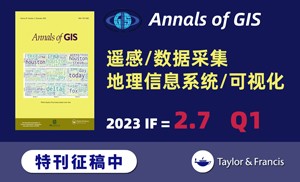
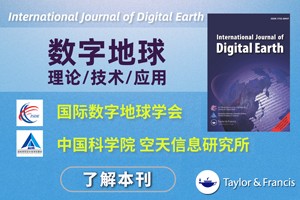




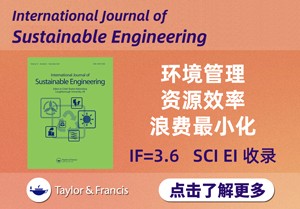


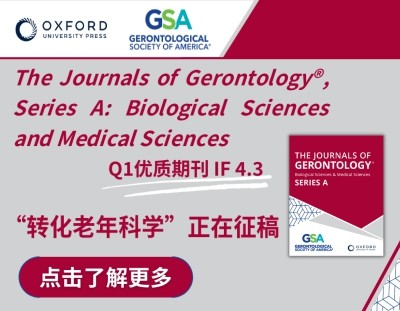
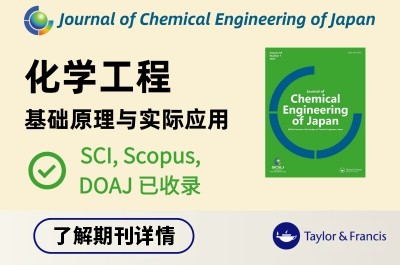


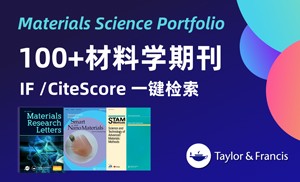
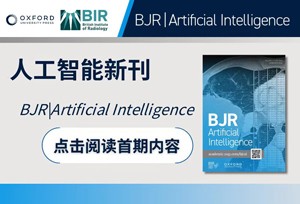




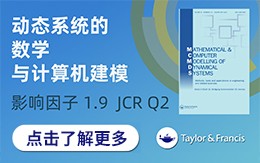



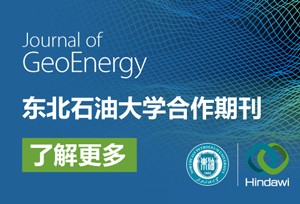
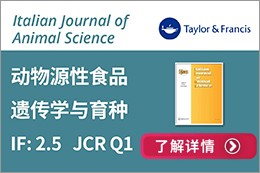






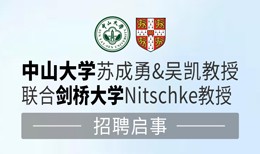







 京公网安备 11010802027423号
京公网安备 11010802027423号